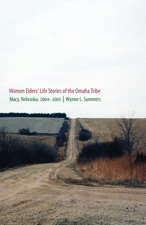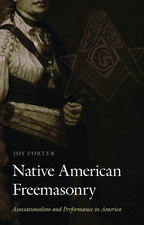City Indian: Native American Activism in Chicago, 1893–1934
Autor Rosalyn R. LaPier, David R. M. Becken Limba Engleză Paperback – 31 aug 2020
Robert G. Athearn Award from the Western History Association
In City Indian Rosalyn R. LaPier and David R. M. Beck tell the engaging story of American Indians who migrated to Chicago from across America to work and emerged as activists. From the 1893 World’s Columbian Exposition to the 1934 Century of Progress Fair, American Indians in Chicago voiced their opinions about political, social, educational, and racial issues.
City Indian focuses on the privileged members of the American Indian community in Chicago: doctors, nurses, business owners, teachers, and entertainers. During the Progressive Era more than any other time in the city’s history, they could be found in the company of politicians and society leaders, at Chicago’s major cultural venues and events, and in the press, speaking out. When Mayor “Big Bill” Thompson declared that Chicago public schools teach “America First,” American Indian leaders publicly challenged him to include the true story of “First Americans.”
As they struggled to reshape nostalgic perceptions of American Indians, these men and women developed new associations and organizations to help each other and to ultimately create a new place to call home in a modern American city.
In City Indian Rosalyn R. LaPier and David R. M. Beck tell the engaging story of American Indians who migrated to Chicago from across America to work and emerged as activists. From the 1893 World’s Columbian Exposition to the 1934 Century of Progress Fair, American Indians in Chicago voiced their opinions about political, social, educational, and racial issues.
City Indian focuses on the privileged members of the American Indian community in Chicago: doctors, nurses, business owners, teachers, and entertainers. During the Progressive Era more than any other time in the city’s history, they could be found in the company of politicians and society leaders, at Chicago’s major cultural venues and events, and in the press, speaking out. When Mayor “Big Bill” Thompson declared that Chicago public schools teach “America First,” American Indian leaders publicly challenged him to include the true story of “First Americans.”
As they struggled to reshape nostalgic perceptions of American Indians, these men and women developed new associations and organizations to help each other and to ultimately create a new place to call home in a modern American city.
| Toate formatele și edițiile | Preț | Express |
|---|---|---|
| Paperback (1) | 217.90 lei 43-57 zile | |
| Nebraska – 31 aug 2020 | 217.90 lei 43-57 zile | |
| Hardback (1) | 327.17 lei 43-57 zile | |
| Nebraska – 30 apr 2015 | 327.17 lei 43-57 zile |
Preț: 217.90 lei
Nou
Puncte Express: 327
Preț estimativ în valută:
41.70€ • 43.29$ • 34.77£
41.70€ • 43.29$ • 34.77£
Carte tipărită la comandă
Livrare economică 24 martie-07 aprilie
Preluare comenzi: 021 569.72.76
Specificații
ISBN-13: 9781496222220
ISBN-10: 1496222229
Pagini: 300
Ilustrații: 21 photographs, 3 tables, index
Dimensiuni: 152 x 229 x 22 mm
Greutate: 0.44 kg
Editura: Nebraska
Colecția University of Nebraska Press
Locul publicării:United States
ISBN-10: 1496222229
Pagini: 300
Ilustrații: 21 photographs, 3 tables, index
Dimensiuni: 152 x 229 x 22 mm
Greutate: 0.44 kg
Editura: Nebraska
Colecția University of Nebraska Press
Locul publicării:United States
Notă biografică
Rosalyn R. LaPier (Blackfeet/Métis) is an associate professor in the Environmental Studies Program at the University of Montana. She is the author of Invisible Reality: Storytellers, Storytakers, and the Supernatural World of the Blackfeet (Nebraska, 2017). David R. M. Beck is a professor of Native American studies at the University of Montana. He is the author of several books, including Unfair Labor? American Indians and the World’s Columbian Exposition in Chicago (Nebraska, 2019) and The Struggle for Self-Determination: History of the Menominee Indian History since 1854 (Nebraska, 2005).
Cuprins
List of Photographs
Preface and Acknowledgments
1. American Indians and Chicago in the Nineteenth Century
2. The World Comes to Chicago (The 1893 World’s Columbian Exposition)
3. Indian Professionals in the City
4. Indian Encampments and Entertainments
5. The Indian Fellowship League
6. Emerging Organizations
7. Definitions of Indianness at the Century of Progress
8. Self-Determination
Appendix of Tables
1. Chicago Population and American Indian Population in Chicago, 1830–2010
2. Chicago Indians in the 1920 Census
3. Chicago Indians in the 1930 Census
Notes
Bibliography
Index
Recenzii
"City Indian is a most important addition to the literature on Native activism, the history of Indigenous representation, and urban history."—Coll Thrush, Michigan Historical Review
“LaPier and Beck reconstruct a history of Indigenous people both transcending and maneuvering within that two-worlds theme, and not cowering at modernity or drifting off into the sunset. . . . Scholars of not only the vital and maturing field of Indian urbanization, but also activism, education, labor, and modern Indigeneity, should consult this volume and add a copy to their shelves.”—Douglas K. Miller, Journal of American Studies
"For anyone interested in Chicagoans—all Chicagoans—this book tells a tale that explains how the non-Indian city treated Native Americans. And, by extension, how it has treated anyone on the edges, whether African Americans, Hispanics, non-heterosexuals, women, the poor, and the unconventional."—Patrick T. Reardon, Third Coast Review
“A substantial contribution to emerging scholarship on Native Americans and cities that provides fresh insight and helps us understand the motivations, strategies, tensions, controversies, and triumphs that have characterized the work and lives of local and national Indian leaders.”—Nicolas G. Rosenthal, author of Reimagining Indian Country: Native American Migration and Identity in Twentieth-Century Los Angeles
"Rosalyn LaPier and David R.M. Beck . . . add to a growing literature on urban Indians' experiences with their fine monograph City Indian."—Paul C. Rosier, Anthropos
"A welcome addition to the robust field of studies of Indian in urban places."—Sherry L. Smith, South Dakota History
“City Indian covers an important and timely topic. This history of Indians in urban settings is currently under considerable and probing reconsideration. With this book Rosalyn LaPier and David Beck have shown how Native peoples in Chicago have determined their destinies.”—Brian Hosmer, H. G. Barnard Chair of Western American History and coeditor of Tribal Worlds: Critical Studies in the History of American Indian Nation Building
Descriere
A study of the significant role that Indigenous activists living in Chicago played in shaping local and national public perception of Native Americans in the early twentieth century.























